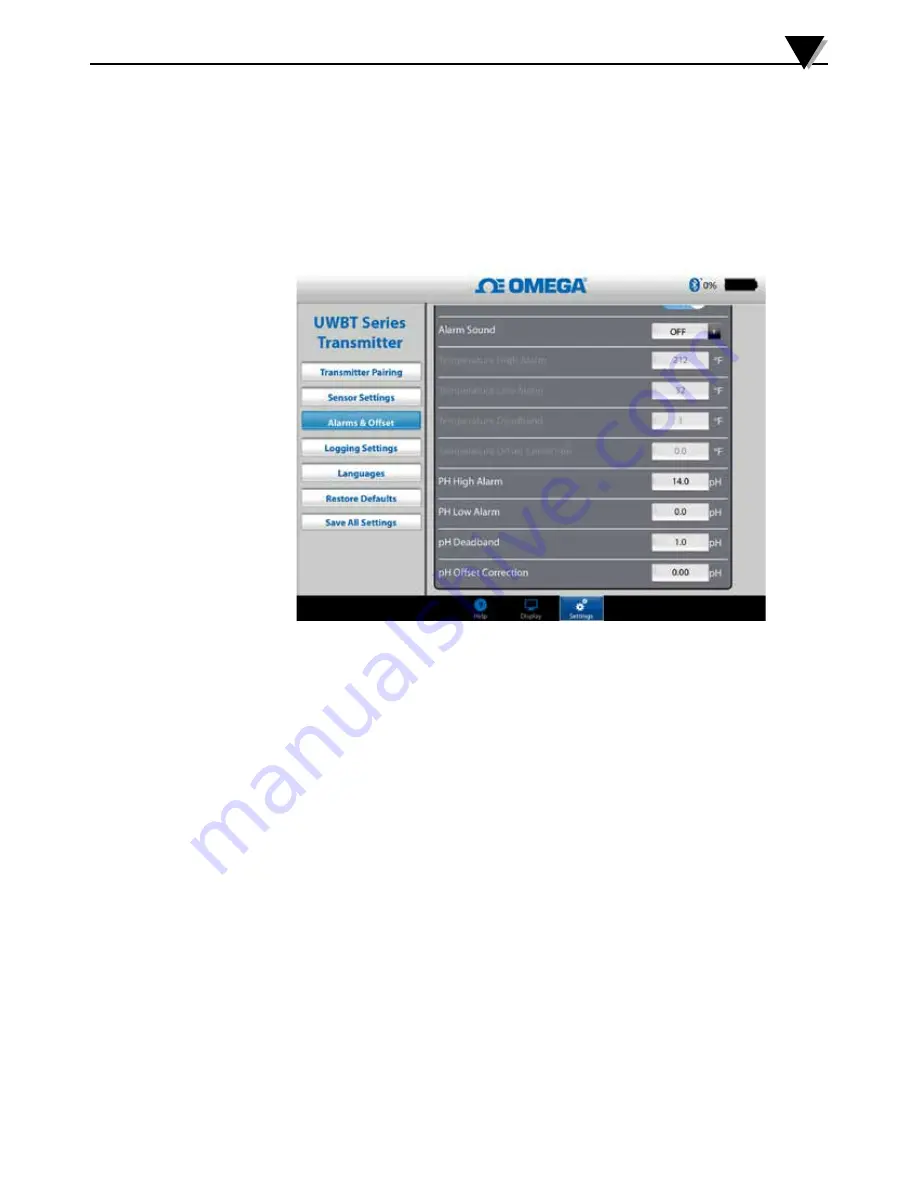
Low Temperature Alarm Value
You can set this alarm value to lowest value of the particular sensor by using
custom key board entry. For example, you can set up to -148°F for K-type
thermocouple.
If you type in an alarm value that exceeds the limit of your sensor, the UWBT
app will automatically set your low alarm to the lowest possible value for that
sensor.
Figure 4-42. Entry For Temperature Values
Temperature Deadband
Deadband is the range through which the sensor reading can vary without
prompting a change in alarm state. Once the sensor reaches a high or low
alarm state, the alarm stays active until the reading reaches a value of either
“high alarm value – deadband value” or “low alarm value + deadband value”.
Temperature deadband is always a positive number. Below are examples of
deadband settings for temperature transmitters:
1. High alarm state - If you set the temperature deadband to 10°F and the high alarm
value to 250°F, the device will be in a high alarm state (red LED blinks 2 times every 2
seconds) when the temperature measurement reaches 250°F or above. The device will
stay in the alarm state until the temperature measurement reaches 240°F or below
(“high alarm value – deadband value”, which is 250°F - 10°F).
2. Low alarm state - If you set the temperature deadband to 10°F and the low alarm
value to 50°F, the device will be in a low alarm state (red LED blinks 2 times every
2 seconds) when the temperature measurement reaches 50°F or below. The device
will stay in the alarm state until the temperature measurement reaches 60°F or above
(“low alarm value + deadband value”, which is 50°F + 10°F).
Software Instructions (iOS)
4
4-33
















































